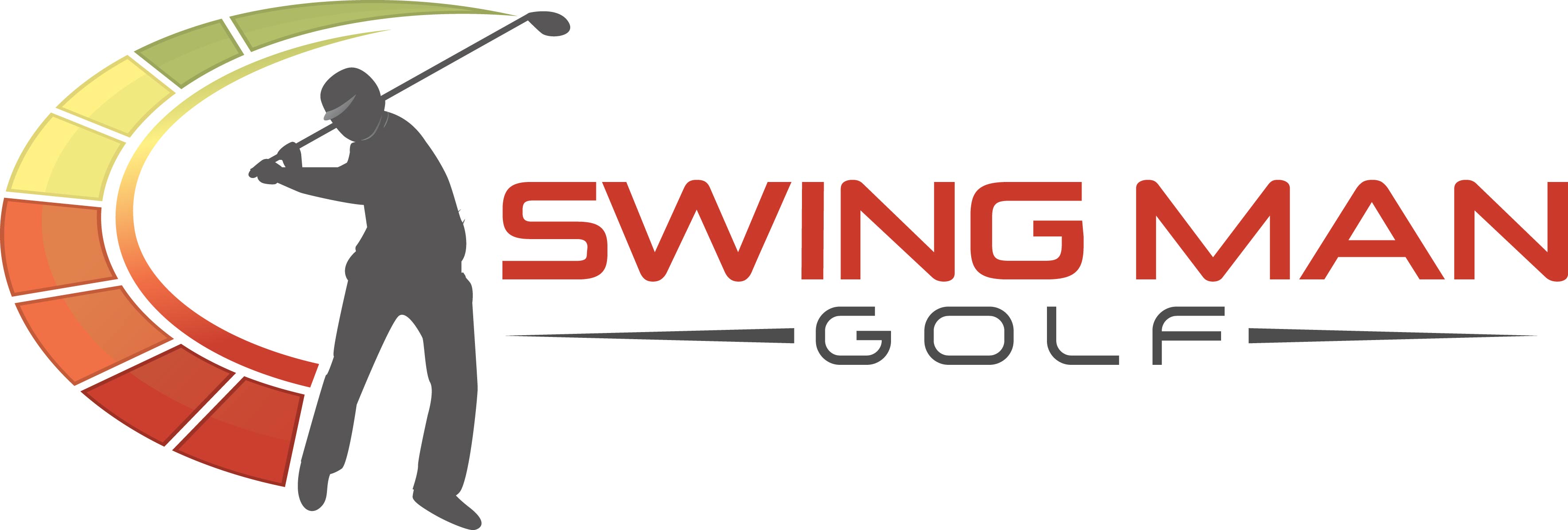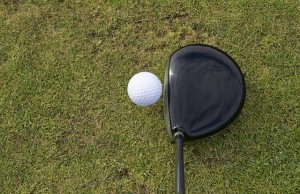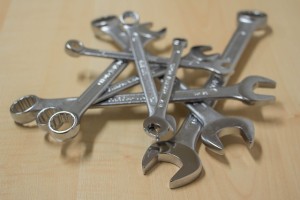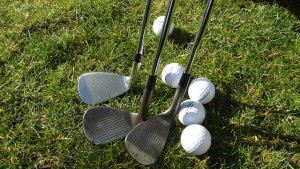By Paul Myers
For most golfers, the driver is their favorite club in the bag – and it isn’t particularly close. The feeling of smashing a drive long down the middle of the fairway is something that golfers search for over and over again. Rarely will you find a golfer who would prefer to hit a fairway wood or long iron off the tee. If there is one thing that golfers have in common across the board, it is a passion for teeing it high and letting it fly.
If you are a golfer who loves to hit the driver, the last twenty years have brought you plenty of great news. Where drivers where once small-headed clubs made from wood, they are
now 460cc monsters made from some of the most advanced metals in the world. Modern drivers are capable of sending the ball more than 300 yards in the air when in the correct hands – a distance that was considered impossible in the not-so-distant past. Of course, modern drivers are rather expensive due to the materials and engineering required to bring them to life, but most golfers are glad to pay the price if it means they can outdrive their playing partners on a regular basis.
The development of this ‘new age’ of golf drivers has even had an effect on golf courses around the world. With stunning distances now possible for a wider range of players, many old courses have either had to be lengthened or become obsolete. In terms of professional competitions, it is now rare to see a course that is under 7,000 yards in length, mostly because of the distance that is possible off the tee. Golf is a bigger, more powerful game than ever before, and you have the driver to thank for that development.
The History of Golf Drivers
While you don’t necessarily need to know the entire history of the golf driver to appreciate what it can do for your game today, it might be helpful to at least have a basic understanding of the development of this popular club. Drivers have only come to look like the metal monsters that they are within the last 20 years or so – prior to that, drivers had a subtler, more natural appearance. Most of the early golf drivers had small heads made from persimmon wood.
Why did they use such small heads on the early drivers? Simple – the wood would start to make the club too heavy if they made the heads much bigger. That meant that golfers were left with a rather small sweet spot on which to make contact. Wood drivers could actually send the ball a significant distance down the fairway, but only when they were struck square in the middle of the face. If you missed the ball out toward the toe or in toward the heel, significant distance would be lost. Today’s drivers are more powerful all the way around, but the biggest difference may be in the way they handle miss-hits. If you miss the ball off the toe or in on the heel with a modern driver, you may lose a few yards, but you can still be left with a nice shot. That simply wasn’t the case in the days of the wood driver.
The metal revolution started to take shape in 1979 when TaylorMade introduced the first steel driver onto the market. This was seen as a radical development at the time, and it is safe to say that not all golfers were excited about the idea of switching from wood to
metal. There were a number of undeniable advantages to playing golf with a metal driver, however. The first, and most important, was the weight savings that were achieved. Swinging a hollow metal-headed driver meant the overall weight of the club could be lower, which would instantly increase swing speed. At the same time, the heads could be made bigger thanks to the weight savings. Therefore, golfers suddenly had access to clubs that were bigger (meaning a bigger sweet spot) and lighter all at the same time. These were advancements that wood drivers simply couldn’t keep up with, and the metal models soon came to completely dominate the game.
Throughout the course of the last 30 years, metal drivers have continued to grow and grow, enabling golfers to hit the ball harder and farther than ever before. Seeing no end in sight to the development of longer-hitting drivers, and not wanting to forever change the landscape of the game, the USGA stepped in and established limits within the rules of golf. To make sure the golf drivers hitting the market didn’t become too ridiculous, the USGA set limits of 460cc’s for the volume of the club head, and 48’’ for the overall length of the club. Now that these limits have been in place for some time, the rapid increase in driving distance has been somewhat slowed. Make no mistake, players are still hitting the ball incredible distances off the tee, but the technological advancements that were so rapidly changing the game in the 1980’s and 1990’s have somewhat cooled off.
As long as the current rules remain in place, we will likely see the golf driver remain generally the same for years to come. Of course, that doesn’t stop golf club companies from trying to come up with the latest and greatest models that will win over the market. Plenty of new technologies are still being put into golf drivers, but the advantages they offer are subtle compared to the changes that happened with the size of the club head expanded. Today, as long as you have a modern driver that fits your swing and features a quality shaft, you should be ready to max out your distance potential.
How the Golf Driver Has Changed the Professional Game
Looking the historical stats from the PGA Tour, it is shocking to see how rapidly driving distance has changed through the years. In 1980, there were only six players who averaged between 270 – 280 yards off the tee, and none longer on average than 280. Thanks to the developments in technology, along with an increased emphasis on fitness, those numbers
looked quite different by 2011. In that year, there were 21 players averaging over 300 yards off the tee, and just a single player averaging under 270. Put another way, the very longest hitters in 1980 would have been some of the very shortest hitters in 2011.
It is easy to point to equipment as the main explanation for this rise in power players, but there is more to it than that. For one, golfers as a whole are in better physical condition than they were once upon a time. Golf is seen as an athletic sport today, and professionals who are serious about their careers take the time and effort to get themselves in great shape. Also, with improved video equipment to use during practice sessions, players have been able to sharpen their technique – which can lead to additional power. While there is no doubt that equipment has led the power revolution, the other factors at play should not be forgotten.
Ingredients for a Long Drive
Golf is a complicated game. If you think you can just head to the golf store, pull out your credit card, and buy a new driver that will provide you with great distance and accuracy, you are going to be seriously disappointed. Although every golf store has plenty of great drivers to offer – not all of those drivers are going to be great for your game. Rather, you have to do the work of finding the perfect club to suit your swing and your playing style. Only when you can match the golf driver you are using with your own personal characteristics will you find your best performance.
The best way to find the right driver for your game is to go through a club fitting process at
your local golf shop or golf course. A good facility will have a launch monitor (or similar device) which will track all of your stats while hitting a few different drivers. By looking at the statistics gathered by the computer, the professional you are working with should be able to recommend the right club for you. This process only takes a short period of time, and is well worth it considering how many hundreds of dollars you have to spend to buy a nice new driver. As an added bonus, many golf shops will offer to refund the fee for this service if you choose to buy your new driver from their inventory.
Before you go into a club fitting for your new driver, it would be a good idea to know what characteristics you want to find. Following are some of the points to watch for as you shop for that perfect new driver.
- Low spin rate. Most players are going to best served by a driver that offers them a low spin rate. That means that the driver passes a low overall amount of spin onto the golf ball at impact. A shot that has a low spin rate will usually take a flat, boring trajectory, and the shot should roll out when it hits the ground. Unless you play somewhere that frequently has wet and soft fairways, a low spin rate is going to be your friend. However, if you do usually play on a soft golf course, consider looking for a slightly higher spin rate so you can carry the ball longer distances.
- High launch angle. If you can combine a high launch angle with a low spin rate, you will really be in business when it comes to hitting long drives. That low spin rate will give you the flat trajectory mentioned above, but the high launch angle will still provide you with plenty of carry distance. The shaft that you are using will have a lot to do with the launch angle created, so be sure to test out a variety of shafts until you find one that matches will with your swing dynamics.
- Center-face contact. Believe it or not, your ability to hit the center of the club face at impact will actually vary from club to club. You might think that the ability to hit the sweet spot would stay the same no matter what brand of driver is in your hands, but that is not the case. Based on different shaft flexes, kick points, swing weights, and more, you will find that some clubs make it easier for you to strike the center of the face than others. Obviously, you want to choose a club that strikes the ball in the center of the face as frequently as possible, as center-face contact leads to both longer and straighter drives.
Picking the right golf driver is about far more than just watching some golf on TV and buying the one that is used by the most Tour professionals. To put the right driver in your bag, you will want to go through a professional fitting process so you can be sure the performance characteristics of the club you choose are a nice match for the swing you are making.
Customization on the Fly
By far, the biggest development in golf drivers in recent years is the ability to customize your club on the go. Previous to the last five years or so, you had to take your club to a professional to have it customized – unless you had the skills and equipment to do it yourself. That meant that doing something like putting a new shaft in your driver required
a significant investment of both time and money. Most average golfers simply used their clubs the way they were since it was such a hassle to have them changed in any meaningful way.
Fortunately, times have changed. There are numerous drivers on the market today that offer a variety of customization options which can each be altered in a matter of moments. You can take your driver to the practice range and make changes to it from shot to shot until you find the right combination of variables that leads you to great ball striking. While this is a tremendous development for golfers everywhere, it is important that you understand how these alterations work if you are going to get the maximum benefit from each of them.
Interchangeable Shafts
As mentioned above, many drivers now include the ability to change out shafts in just a matter of seconds. Traditionally, golf club heads have been attached to steel or graphite shafts using epoxy, meaning the head was permanently attached to the shaft until that epoxy was melted down and the club shaft was pulled from the head. Once that was done, a new shaft would have to be glued into the club head before it could be used again. Quite obviously, this was work that most golfers were either not able or not willing to do.
If you have one of the new drivers in your bag with the capability to change out shafts on the go, you no longer need to worry about melting down epoxy or anything else. You simply ‘lock’ and ‘unlock’ the shafts in and out of the club head as you wish. Theoretically, you could have a number of different shafts in your bag during a practice session, and you could experiment with them one by one. While it is against the rules to change the characteristics of your driver during a round, you can certainly experiment during practice sessions to optimize your performance. The shaft of your driver is probably the most important single piece of the club, so being able to try out a variety of shaft models is a huge advantage.
Adjustable Lofts
In addition to being able to change out shafts in just a couple of seconds, you can also change the loft of your driver in the same amount of time (assuming you have a model with that feature available). It used to be that deciding on the loft of your driver was one of the most important decisions that you had to make. Changing loft by even one degree can have a dramatic effect on your distance and ball flight pattern, so it was essential that you chose wisely. Today, you can simply tweak your loft from day to day based on how your swing feels, the conditions of the course, etc.
One example of how this is such an important development is when you are playing golf on consecutive days but you face dramatically different conditions. Imagine that you are playing in a two-day tournament at your local club. On the first day, the weather is dry and warm, and the course is playing fast. For that round, you choose to use a lower loft setting so you can get the ball down and running on the ground as soon as possible. However, a big rain storm comes in overnight and the course is left wet and soft for round two. In order to make an adjustment to the conditions, all you need to do is add some loft to your driver and hit a few balls on the practice tee to get comfortable. Instantly you will have a club that is able to keep the ball in the air for longer – meaning you can increase your carry distance and not lose as much yardage to the soft conditions. A change like that would have been impossible as recently as a few years ago, but it is now quick and easy even for the average golfer.
Movable Weight Distribution
TaylorMade was the first major club manufacturer to include moveable weights on a driver, but not almost every company has some kind of weight adjustment available on their drivers. Moving the weight can affect the way the club head performs through the hitting area, as the heavier part of the club is going to move slower than the lighter part. By adding or taking away weight in specific parts of the club head, you can dramatically alter the ball flight that will result.
In the ‘old days’, these adjustments were made with lead tape. The tape was added to a part of the club head to make it heavier, and that portion of the club would slow down. Of course, moveable weight built into the club is a far easier solution, and it opens up a world of possibilities. For example, if you are a player who struggles with a hook, you are moving the toe of the club too quickly through the hitting area. The toe is closing down through impact, which closes the club face, leading to a shot that quickly turns left in the air (for a right handed golfer). To counteract that problem, you could move some of the weight on your driver head out toward the toe of the club. Adding weight to the toe will slow that end of the club head down through impact, and your ball flight should straighten out. This concept also works in reverse – if you struggle with a slice, add weight to the heel of the club to allow the toe to move faster in order to find a square position at impact.
Obviously, moving the weights around in your driver is not a substitute for improving your golf swing. These kinds of adjustments can only take you so far, but they will help when it comes to putting the ball in play and getting on with your round. The best way to improve your game in the long run is to practice – but adjusting the characteristics of your driver can help you fine tune your ball flight in order to get the best possible performance from your current swing.
The Most Popular Golf Drivers
There are a number of different drivers on the market today, but the bulk of the clubs that are sold around the world are made by just a handful of companies. If you are looking to buy one of the best drivers you can get your hands on, chances are that club was made by
TaylorMade, Titleist, Callaway, or PING. Of course, there are other players in the golf equipment market, but the clubs made by those four companies are the ones that you will see in the bags of the majority of Tour players – as well as the majority of people you play with on a regular Saturday morning.
To that point, those four companies have combined to create some of the most successful drivers in the history of the game. For TaylorMade, most would argue that their biggest hit was the R7 driver. This was the driver that moveable weights a popular feature in golf clubs. The original R7 Quad was put on the market in 2004, and many different variations on its theme have come along in the years since its debut. For the last decade, TaylorMade has been the most popular name in drivers, and that success is largely owed to the impressive accomplishments of the original R7 Quad.
When it comes to Callaway drivers, there is only one name that comes to mind right off the bat – the Big Bertha. First offered to the golfing public in 1991, the Big Bertha changed the game in a variety of ways. Although only 190cc’s, which is tiny by today’s standards, the Big Bertha at that time looked huge compared to the traditional wood drivers. The head of the club was completely made from stainless steel, which was another departure for golfers used to traditional persimmon. TaylorMade was the first to bring the metal driver to the golf world, but Callaway changed the game as well when the Big Bertha made its appearance.
Titleist is one of the longest running golf companies, with ties to the game dating all the way back into the 1930’s. However, they were primarily focused on golf balls for most of that time, and they have been a relatively recent entrant into the golf club business. With that said, they have certainly made their mark, as Titleist clubs have been used to win some of the biggest tournaments in golf. One of their most successful entrants into the driver market was the 975 model. The 975D and 975J were considered highly innovative at the time, and they were very popular clubs among professionals and accomplished amateurs. These drivers dominated much of the market in the late 1990’s, and Titleist has continued from there as one of the top driver producers.
Finally, PING is the company with perhaps more golf history to its name than any other. While PING might be best known for the putters and wedges they created, they have brought plenty to the world of drivers as well. In the late 90’s, the PING TiSI driver hit the market with a focus on custom fitting. PING was one of the early innovators when it came to custom fitting clubs, as they put an emphasis on that capability long before it was popular throughout the game. The TiSI was the largest custom fit driver at the time, and it found its way into the golf bags of countless players.
While the four drivers highlighted above all made a significant mark on the business, there are still plenty of new and exciting products being brought to market today. Specifically, clubs such as those on the list below are worthy of a closer look –
As long as equipment companies continue to make big money by developing new drivers, there are sure to be more and more exciting technologies for golfers to use. It is incredible to think how far the design and function of golf drivers has come in just the last 20 years, and it is nearly impossible to imagine where it is going. Thanks in large part to companies like Titleist, TaylorMade, Callaway, and PING, golfers have plenty of great options when they need to add a new weapon to the bag.
Just One of Fourteen Clubs
It is easy to become somewhat obsessed with the driver. After all, most would agree that the driver is the club that is the most exciting to hit, and blasting a tee shot past your playing competitors is something that feels good time after time. However, in order to become the best golfer you can be, it is important that you remember the driver is just one of your fourteen clubs. Yes, it is an important one, but the other thirteen clubs need to perform as well or all of your great drives will be wasted.
Fortunately, the golf equipment companies fully understand how important the rest of your clubs are when it comes to shooting low scores. The companies like those listed above are hard at work not only innovating driver technologies, but they are also great
irons, wedges, fairway woods, hybrid clubs, and putters. As you work on finding the right golf driver for your game, don’t forget to assemble the rest of your set just as carefully. There is nothing wrong with loving your driver – but keep it in perspective as you work on improving your game. All golfers love to improve, and you aren’t going to find improvement through your driver alone.
Drivers will always be fun for golfers. They love to talk about them, try out new ones, and hit them as frequently as possible during a round of golf. If you are a player that loves the driver, hopefully the content above as given you a new appreciation for your favorite club. Good luck and hit ‘em long!







